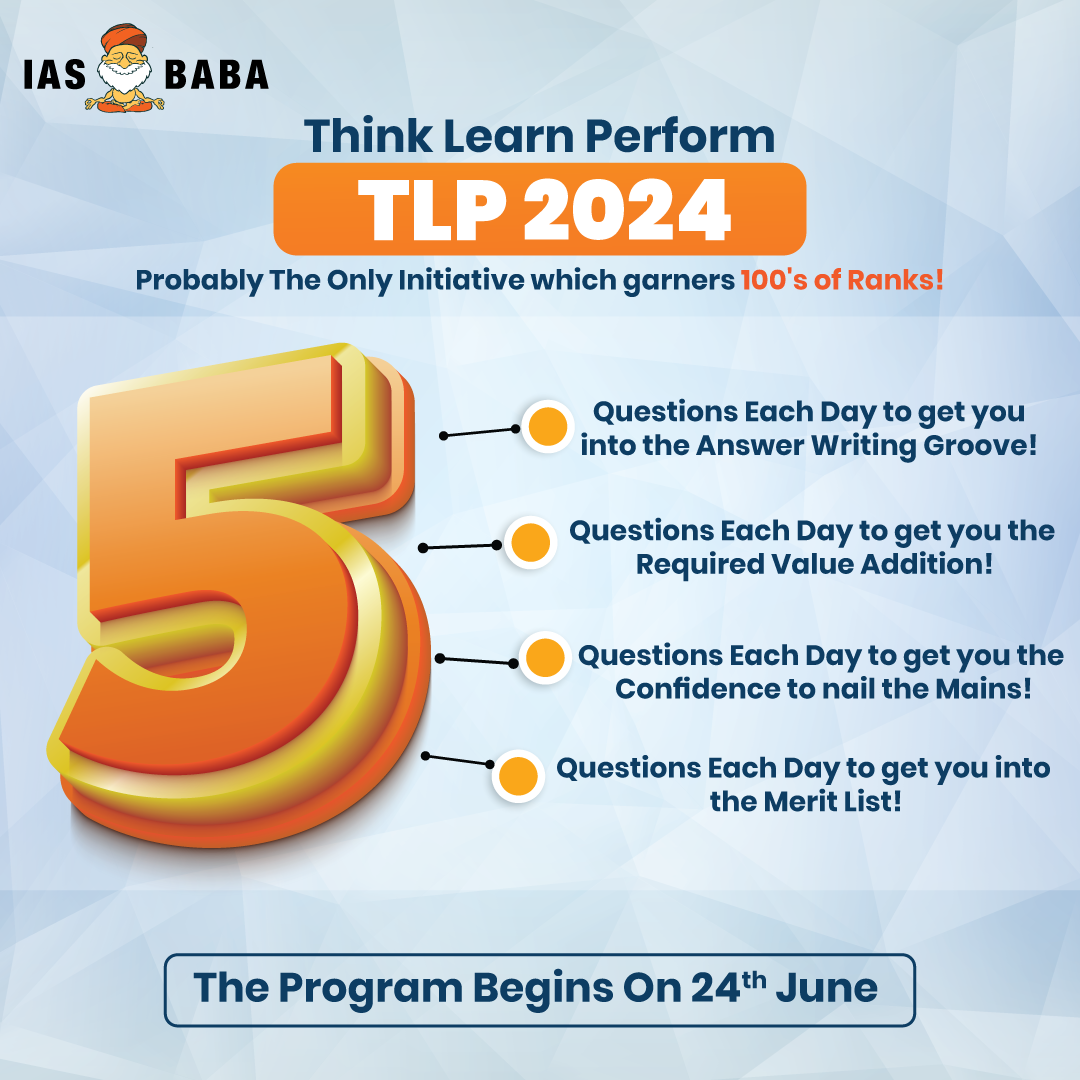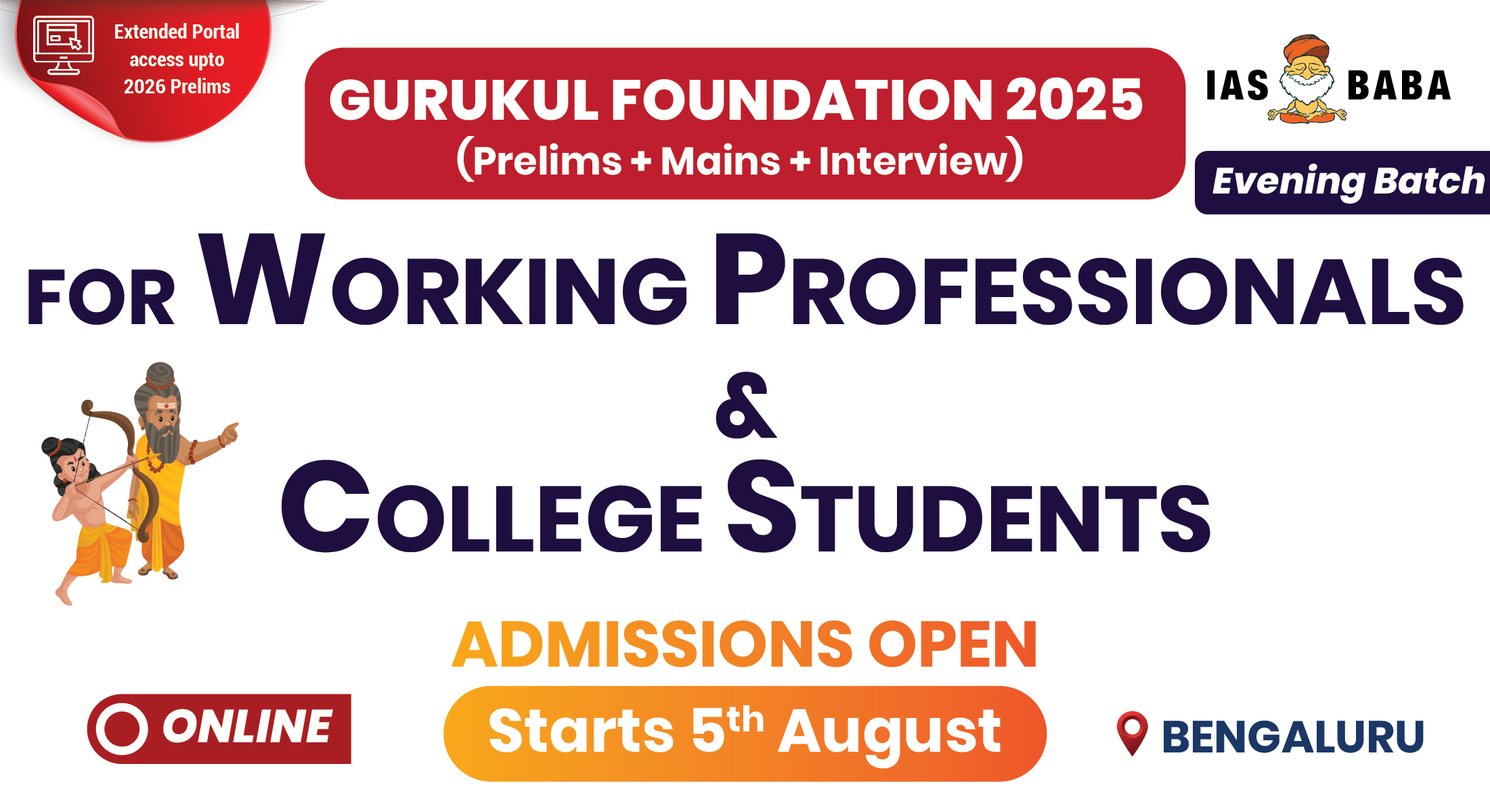IASbaba's Daily Current Affairs Analysis
IAS UPSC Prelims and Mains Exam – 28th August 2019
Archives
(PRELIMS + MAINS FOCUS)
Child well-being index
Part of: GS Prelims and GS Mains I –Society
In News
- The index is prepared by NGO World Vision India and research institute IFMR LEAD to measure and tracks children’s well-being comprehensively.
- The index contains 24 indicators based on three key dimensions of healthy individual development, positive relationships and protective contexts.
- Kerala, Tamil Nadu, Himachal Pradesh and Puducherry topped the index rankings whereas Meghalaya, Jharkhand and Madhya Pradesh were at the bottom of rankings
- The report helps States to prioritise the areas of interventions with respect to improving the status of children
- Some of the key indicators that need to be studied in the future include mobile usage, digital access, financial literacy, mental health and quality of relationships per se, between parents/peers and children

Bonn Challenge
Part of: GS Prelims and Mains GS-III – Environment Conservation
In News
- India for the first time will be hosting the 14th session of the Conference of Parties (COP-14) of the United Nations Convention to Combat Desertification (UNCCD) from 2nd -13th September 2019
- Bonn Challenge is a global effort to bring 150 million hectares of the world’s deforested and degraded land into restoration by 2020, and 350 million hectares by 2030
- At the UNFCC COP 2015 in Paris, India also joined the voluntary Bonn Challenge pledge to bring into restoration 13 million hectares of degraded and deforested land by the year 2020, and additional 8 million hectares by 2030.
- In India about 29% or about 96.4 million hectares are considered degraded (soil becoming unfit for cultivation)
- Pradhan Mantri Fasal Bima Yojana, Soil Health Card Scheme, Soil Health Management Scheme and Pradhan Mantri Krishi Sinchayee Yojana are some of the schemes to tackle land degradation.
Do You know?
- United Nations has 3 Rio Conventions namely, United Nations Framework Convention on Climate Change (UNFCCC), Convention on Biological Diversity (CBD) and United Nations Convention to Combat Desertification (UNCCD).
- Established in 1994 UNCCD is the only legally binding international agreement linking environment and development issues to the land agenda
- In 1994, the United Nations General Assembly declared 17 June the “World Day to Combat Desertification and Drought” to promote public awareness and the implementation of the UNCCD
Fedor
Part of: GS Prelims and GS Mains III – Science & Technology
In News
- Fedor short for Final Experimental Demonstration Object Research is a Russian humanoid robot which has recently reached International Space Station(ISS).
- Fedor weighing 160 kg & standing 180 cm tall, was sent in an unmanned Soyuz capsule from the launch pad at Russia’s space facility in Baikonur, Kazakhstan.
- It will copy human movements and will help with high-risk tasks at the ISS specially to work on the outside of the ISS
- While Fedor is Russia’s first robot in space, in 2011, NASA sent up Robonaut 2 and in 2013 Japan sent up a small robot called Kirobo into Space.
Do You Know?
- The International Space Station is habitable artificial satellite in low Earth orbit.
- The ISS programme is a joint project between five participating space agencies:
- NASA – USA
- Roscosmos – Russia
- JAXA – Japan
- ESA – Europe
- CSA – Canada
- The ownership and use of the space station is established by intergovernmental treaties and agreements
- The ISS serves as a microgravity and space environment research laboratory in which crew members conduct experiments in biology, human biology, physics, astronomy, meteorology, and other fields
Xenotransplantation
Part of: GS Prelims and GS Mains III – Science & Technology
In News
- Xenotransplantation is the transplanting of organs from one species to another
- Pioneering transplant surgeon Sir Terence English, who had performed the first heart transplant in the United Kingdom in 1979, declared that his team would transplant a pig’s kidney into a human’s body by end of 2019.
- The first attempts at animal-to-human transplants were made in 1838, when the cornea of a pig was transplanted into a human.
- Over the past century there has been unsuccessful attempts to transfer organs from pigs, goats, sheep, monkeys, chimpanzees, baboons and pigs into humans
- With a lack of human cadavers as donors, researchers are looking at animal organs as viable alternative.
- A pig’s genetic make-up and internal organs are similar to a human’s. Its weight, lipids, arterial pressure, heart rate, renal function, electrolyte balance, and digestive system match those in the human body
- Disadvantage with xenotransplantation: fear of transmission of viruses from animals to humans and high rejection rate (human body’s immune system starts working against any foreign organ)
Do You Know?
- India’s national registry shows 1,945 liver and 7,936 kidney transplants were conducted in 2018.
- However, India needs 1.8-2 lakh kidney transplants every year, as per the Ministry of Health and Family Welfare data.
- In 1997, Dr Dhani Ram Baruah attempted pig-to-human heart transplant on a patient in Guwahati who died a week later due to infection. He was held guilty of an unethical procedure, culpable homicide, violation of the Transplantation of Human Organs Act, 1994 and sent to jail.
(MAINS FOCUS)
NAGALAND
TOPIC: General Studies 2
- Government policies and interventions for development in various sectors and issues arising out of their design and implementation.
- Welfare schemes for vulnerable sections of the population by the Centre and States and the performance of these schemes; mechanisms, laws, institutions and bodies constituted for the protection and betterment of these vulnerable sections
Chasing peace in Nagaland
Context:
- More than three years ago, the government led by Prime Minister Narendra Modi had announced with much fanfare the signing of a historic framework agreement to end the Naga insurgency, which is often termed as the mother of all insurgencies in India.
Concern:
- Lasting peace in the Northeast is not possible without resolving the Naga insurgency
Framework Agreement:
- The framework agreement was signed between the Central government and the Naga Groups led by the National Socialist Council of Nagaland- Isak- Muivah (NSCN-IM).
- The central government accepted the uniqueness of Naga history and culture and primacy of the Indian Constitution was accepted by the NSCN-IM.
- Earlier the objective of Naga group was to establish an independent sovereign state for the Naga community but now the demand has been limited to the creation of a Greater Nagalim with the integration of the Naga-inhabited areas of Assam, Manipur and Arunachal Pradesh
Key notes:
- Shillong Accord, 1975: The Naga National Council (NNC) led by Angami Zapu Phizo accepted the Indian Constitution. NNC was formed in 1946 to hold the Naga community and their interest together.
- NSCN, 1980: to oppose the decision of NNC to accept Indian Constitution, Maoist guerilla leaders Isak Chisi Swu, Thuingaleng Muivah, and SS Khaplang created NSCN in 1980. Later after the differences between the leaders, in 1988, the group split into the NSCN-IM and the NSCN-K. After the death of Phizo in 1991, the NSCN-IM came to be recognized as the voice of Naga assertion.
- The ceasefire agreement, 1997: Govt. of India and NSCN-IM signed a ceasefire agreement which started the peace talks with resolving the conflict but the demand of the group insisted on a separate flag as well as the inclusion of all Naga-inhabited areas in one administration became a roadblock in the peace talks.
- Later in 2015, the framework agreement was signed.
Significance of the agreement:
- First-time NSCN-IM wipes out its demand for attaining sovereignty for Nagas from India.
- The agreement has started the peace talks between the government and the groups. The agreement shifts the nature of the group who prefer violence as a method to achieve their aims as now the groups are regularly held consultations with the government.
- The agreement will strengthen the security of India as the agreement will provide maximum sovereignty to the Nagas to grow.
- The agreement would generate more trusts among Nagas.
Criticisms of the agreement:
- Though the agreement was signed three years ago there is no progress since then.
- The agreement is a secretive agreement as the provisions of the agreements have not been disclosed by the government which makes the rebel groups more active.
- The agreement has failed to address the illegal activities of NSCN-IM.
- The demand for autonomy to Nagas in other states i.e. Assam, Manipur, and Arunachal Pradesh will be a threat to integrity.
- Special arrangement for Nagas as per Article 371 and similar concessions are expected by Manipur also as the Naga insurgency is linked with Manipur insurgency where the Nagas are more active.
- The agreement does not address other important issues like the demand of Separate ‘flag’, non-codification of Naga customary law.
- Politically unviable to accept this demand even though the Centre has agreed to guarantee the protection of the Naga identity.
- The non-Nagas and other ethnic groups may be tempted to demand a similar arrangement
Conclusion:
Lasting peace in the Northeast is not possible without resolving the Naga insurgency, which had also lent some form of support to other disaffected elements in the region from time to time. However, given the complexities involved, there is no easy solution. In other words, any pronouncement about the Naga accord needs to be taken with a pinch of salt.
(TEST YOUR KNOWLEDGE)
Model questions: (You can now post your answers in comment section)
Note:
- Featured Comments and comments Up-voted by IASbaba are the “correct answers”.
- IASbaba App users – Team IASbaba will provide correct answers in comment section. Kindly refer to it and update your answers.
Q.1) Which of the following best reflects the meaning of Xenotransplantation?
- Transferring mitochondrial DNA from donor into recipient embryo
- Process of plant reproduction whereby new plant grows from a fragment of the parent plant
- Transplanting of organs from one species to another
- None of the above
Q.2) Consider the following statements
- Fedor is Russia’s first robot in space which has recently reached International Space Station(ISS)
- ISS is a joint project between NASA, JAXA, Roscosmos, ISRO and European Space Agency
Which of the statement(s) given above is/are correct?
- 1 only
- 2 only
- Both 1 and 2
- Neither 1 nor 2
Q.3) Consider the following statements about Bonn Challenge
- It aims to aims to conserve terrestrial, aquatic and avian migratory species throughout their range.
- India has also joined the voluntary Bonn Challenge pledge.
Which of the statement(s) given above is/are correct?
- 1 only
- 2 only
- Both 1 and 2
- Neither 1 nor 2
Q.4) Consider the following statements about Child well-being index
- It is released by NITI Aayog to track state’s progress in enhancing children’s well-being in a comprehensive manner
- Kerala, Tamil Nadu, Himachal Pradesh and Puducherry topped this year’s index ranking
Which of the statement(s) given above is/are correct?
- 1 only
- 2 only
- Both 1 and 2
- Neither 1 nor 2
MUST READ
Cooking with gas, not wood
Rediscovering development banks
Why women are still being treated as unequal to men
Deforestation, desertification and climate solutions
















